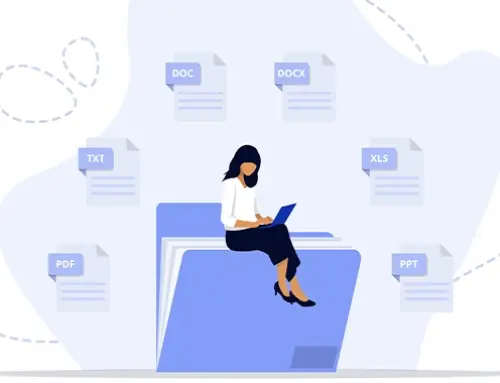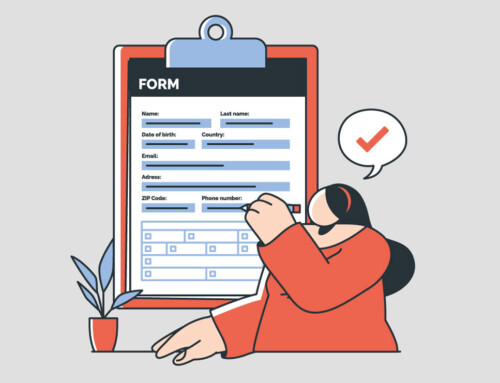Contents
Automation is one of the best ways to save time and money in a law firm. The wrong kind of automation can actually increase stress, though, so make sure you understand the basics before you start working with these tools. This guide will explain what law office automation is and how it works – so that you can see if it’s right for your firm. You’ll learn about document automation, contract automation, electronic case management, legal timekeeping tools and more!
What is law office automation?
Law office automation is the process of using technology to improve a law firm’s operations, boost productivity, and streamline processes.
It differs from legal software in that it can be used by non-lawyers. For example, the practice management software used by many firms includes modules for accounting, scheduling clients and case documents, billing clients, tracking client information and contacts; but it also includes modules for managing vendors and accounts payable or receivable (such as invoicing), which are typically handled by firm staff rather than lawyers or paralegals.
How does document automation work?
With document automation software, your documents are scanned and converted into digital files. The software then creates a PDF of the document and automatically saves it to a cloud storage system. This can be done using a program like Google Drive or Dropbox, which will allow you to access your files from any device with an internet connection.
You can also choose to have your documents printed out as well, which is useful if you’re working on court cases that require hard copies of documentation.
How does contract automation work?
Contract automation can be broken down into four main categories:
- Automated Contract Review: Using technology to review contracts and identify issues, often before the contract is finalized. This process can save lawyers time and money on legal fees, while also preventing costly mistakes.
- Automated Contract Drafting: Using technology to draft contracts without human intervention. This saves time while ensuring that each and every clause in a contract is properly drafted to protect your client’s interests.
- Automated Contract Management: Using technology for managing existing contracts throughout their lifecycle (e.g., collecting signatures from multiple parties) so that you’re always at the forefront of contractual compliance.
If you need to create legal documents, then document automation software is a good option. It allows you to save time by scanning documents and converting them into digital files automatically, so you don’t have to do it manually. You can also print out hard copies of your files if needed.
What is electronic case management?
Electronic case management is a tool that allows you to manage your practice more efficiently. It also provides a place for clients to go and access information about their case. This can be helpful because sometimes clients are not able to meet with the lawyer, but they still want regular updates on their cases.
Electronic case management software can do many things for lawyers:
- It allows you to easily organize your files so that all of them are in one place and easy for you or others in your office to locate as needed.
- With electronic filing systems, it is easy for clients to pay bills online rather than going through snail mail or other traditional methods of payment. This saves time on both ends since there is less back-and-forth when invoices are due or changes need made within the contract itself (like adding new terms).
- You will spend less time organizing client data such as billing info because this information has already been entered into the system by other team members who understand how each part works with another piece like billing codes vs tax codes vs insurance company payments etc etc etc!
Automated Contract Analysis: Using technology for analyzing contracts in order to gain better insight into their structure and purpose. This can help you get a more granular understanding of the legal implications of your client’s contract, as well as provide valuable information about how others have been using similar contracts in the past. Electronic case management software also makes it easy for clients to get updates about their cases. This can be helpful because sometimes clients are not able to meet with the lawyer, but they still want regular updates on their cases. Electronic case management software can do many things for lawyers: It allows you to easily organize your files so that all of them are in one place and easy for you or others in your office to locate as needed. With electronic filing systems, it is easy for clients to pay bills online rather than going through snail mail or other traditional methods of payment..
How does electronic case management work?
Electronic case management (ECM) systems are designed to help lawyers and law firms manage their cases more efficiently and effectively. ECM can help you do the following:
- Improve efficiency: An ECM system can make it easier for multiple people in your firm to access and share documents, including emails, spreadsheets, word processing files and other files. The system will also allow everyone who needs access to the information on a case to have that access without having to wait for physical documents or printed copies of files.
- Improve communication: All attorneys who need access to a particular file can be alerted when new documents are added or changes are made so that they’re immediately informed about what’s happening on each case. This means no one will miss out on important information or miss deadlines because they didn’t know it was there!
- Improve collaboration: By providing easy access for all members of your firm—whether you’re working in different buildings or even different countries—your workflow becomes smoother as everyone has immediate access whenever needed without waiting around until someone physically delivers something from another location (or even country). You’ll spend less time coordinating meetings with clients because everyone involved knows exactly what needs doing at any given moment throughout an ongoing project; this means less travel time spent running back-and-forth between offices while saving money too since travel costs aren’t incurred every day anymore just so we can meet face-to-face with our colleagues here at home office!
Streamline your workflow: With all of your firm’s important documents and communications in one place, it’s easy to keep track of what needs doing on each case. This means no more missed deadlines or lost information that can lead to costly mistakes down the road—not only for you but also for clients! Improve client relations: By having an up-to-date view of every project at any given time, clients will feel reassured knowing that their case is being handled efficiently by a professional team who knows exactly what needs doing at any given moment throughout an ongoing project.
How can legal timekeeping tools help my firm?
As a lawyer, you probably use a timekeeping tool to keep track of your billable hours. However, there are other ways that legal timekeeping tools can be used to help your firm:
- Tracking project costs: Your clients may want an estimate of how much their case will cost before they hire you. You can use a legal timekeeping tool to provide them with this information by entering in data about the length of the case and any work that has already been done on it. The final cost will be generated for them based on those factors, giving them an idea of what they’re paying for up front before signing off on their contract with you (and billing them).
- Tracking expenses: If you need something outside of regular office supplies or services as part of your job—like traveling expenses or equipment rentals—you can add these items into your legal timekeeping software so they show up as expenses when billing clients. That way, clients know exactly where every dollar went!
Online timekeeping: If you’ve ever been in a situation where you need to leave the office and still want to keep track of your hours, then online timekeeping tools can be very beneficial. You can still use these programs even if you don’t have internet access or aren’t near a computer; they will sync with your device when possible so that all of your data is updated at once when you have access again.
Automation reduces time spent on mundane tasks.
Lawyer automation is the use of software to reduce time spent on mundane tasks. The goal is to have a law office that runs as efficiently and effectively as possible.
How can you get started today? There are many options, but here are three suggestions:
- Use an automation tool like RunSensible to manage cases and clients automatically. When new information comes in, it will be automatically added to your calendar and sent out in notifications as needed.
- Automate billing with RunSensible’s billing and payment tool so you can spend more time doing actual work for clients instead of writing invoices manually or sending them off manually by email (and then having to track all those back when they come back). You’ll also be able to link accounts from multiple billing platforms such as Stripe or Paypal, so there’s no need for manual entry anymore!
- Set up automated reminders by using RunSensible (or another project tracker) so that important deadlines don’t slip through the cracks!
Automation isn’t the only way to reduce time spent on mundane tasks. You can also try out a time management system like Pomodoro or Getting Things Done. Here are a few more tips:
Law Office Automation as Legal Workflow Automation
Legal workflow automation refers to the use of technology to automate tasks and processes within a law firm. This can include tasks such as document creation, billing, and case management. Legal workflow automation can be implemented using a variety of tools, such as legal practice management software, document automation software, and more.
Benefits of Legal Workflow Automation
There are several benefits of implementing legal workflow automation in a law firm. Some of the key benefits include:
- Increased efficiency: Legal workflow automation can help law firms save time by automating tasks and processes. This can help legal professionals be more productive and handle more cases.
- Improved accuracy: Legal workflow automation can also help improve the accuracy of tasks and processes. By automating tasks, there is less room for human error, which can help reduce the risk of mistakes and protect the reputation of the law firm.
- Reduced costs: Legal workflow automation can also help law firms save money by reducing the need for manual labor. This can help law firms lower their operating costs and increase profitability.
- Enhanced security: Legal workflow automation can also improve the security of tasks and processes. By automating tasks, law firms can reduce the risk of data breaches and other security threats.
- Improved client satisfaction: Legal workflow automation can also help improve client satisfaction. By automating tasks, law firms can provide faster, more efficient services to clients, which can help strengthen client relationships.
How to Implement Legal Workflow Automation
Implementing legal workflow automation in a law firm requires careful planning and consideration. Here are some steps to follow when implementing legal workflow automation:
- Identify the tasks and processes that can be automated: The first step in implementing legal workflow automation is to identify the tasks and processes that can be automated. This might include tasks such as document creation, billing, and case management.
- Evaluate the tools and technologies available: Once you have identified the tasks and processes that can be automated, the next step is to evaluate the tools and technologies that are available. This might include legal practice management software, document automation software, and more.
- Determine the budget and resources available: It’s important to consider the budget and resources available when implementing legal workflow automation. This will help determine which tools and technologies are feasible and how they can be implemented.
- Develop a plan: Once you have identified the tasks and processes that can be automated, evaluated the tools and technologies available, and determined the budget and resources available, the next step is to develop a plan. This should include a timeline for implementing the automation and a plan for training staff on the new tools and technologies.
- Implement the automation: Once you have developed a plan, the next step is to implement the automation. This might include installing and configuring the tools and technologies, training staff on how to use them, and integrating them into the existing workflow of the law firm.
- Monitor and adjust: After implementing legal workflow automation, it’s important to monitor the results and make adjustments as needed. This might include fine-tuning the automation, training additional staff, or making other changes to improve the efficiency of the automation.
Tips for Successfully Implementing Legal Workflow Automation
Here are a few tips to help ensure the successful implementation of legal workflow automation:
- Start small: It’s usually best to start small when implementing legal workflow automation. This might mean automating a single task or process to begin with, and then expanding the automation as needed.
- Communicate with staff: It’s important to communicate with staff when implementing legal workflow automation. This might include training staff on the new tools and technologies, answering questions, and addressing any concerns they might have.
- Stay up-to-date: Legal workflow automation is an evolving field, so it’s important to stay up-to-date with the latest tools and technologies. This can help ensure that the automation is as efficient and effective as possible.
- Measure results: It’s also important to measure the results of legal workflow automation to ensure that it is having the desired impact. This might include tracking metrics such as time savings, cost savings, and improved accuracy.
Legal workflow automation is the use of technology to automate tasks and processes within a law firm. This can help law firms save time, improve accuracy, reduce costs, enhance security, and improve client satisfaction. To successfully implement legal workflow automation, it’s important to identify the tasks and processes that can be automated, evaluate the tools and technologies available, determine the budget and resources available, develop a plan, and monitor and adjust as needed. By following these steps and implementing best practices, law firms can effectively implement legal workflow automation and realize the full benefits of this technology.
Takeaways
The right law office automation software, like RunSensible, is not just a set of tools that make the job easier, it’s also a way to free up your time so you can focus on the things that really matter: client work, research and analysis. RunSensible is a legal practice management software is a digital solution that helps legal professionals manage and automate the day-to-day operations of their practice. Ready to take your legal practice to the next level? Sign up with RunSensible for free and see how easy it is to manage your law firm or solo practice the right way.
Disclaimer: The content provided on this blog is for informational purposes only and does not constitute legal, financial, or professional advice.






